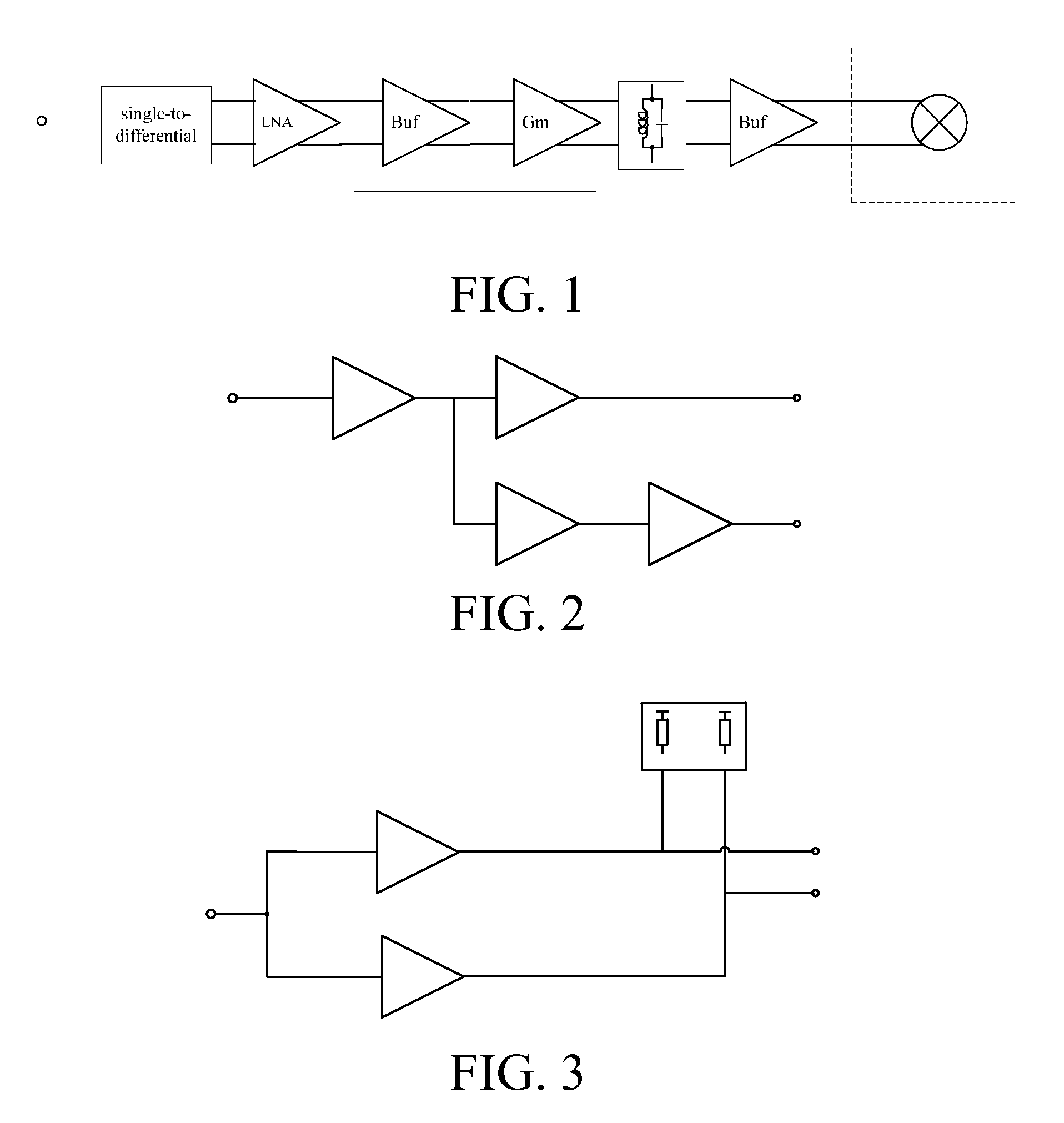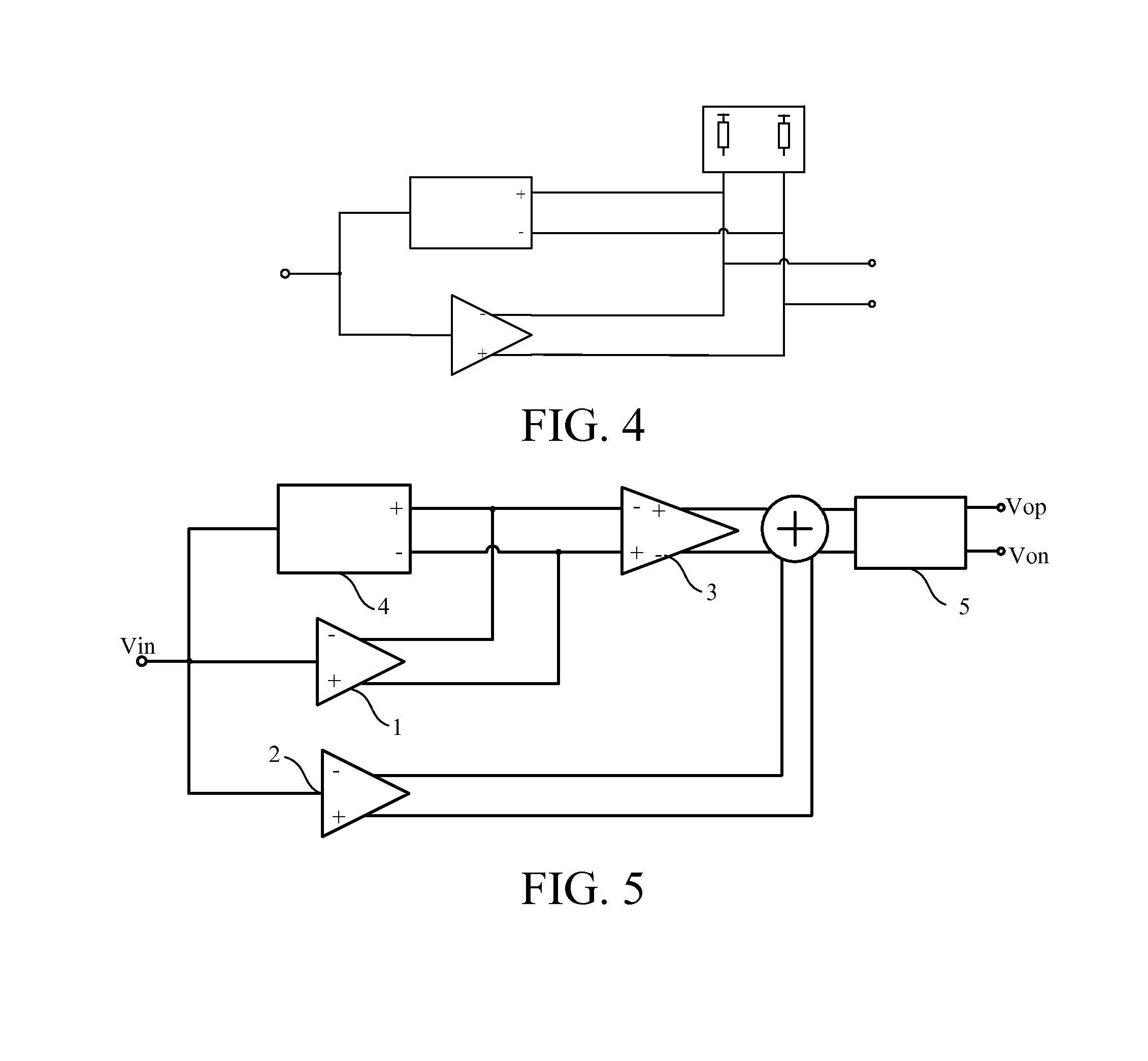Wideband active balun LNA topology with narrow-band filtering and noise cancelling
a wideband active balun and wideband filtering technology, applied in the field of communication systems, can solve the problems of limiting the overall linearity and noise performance, poor iip2 performance of such a structure, and the inability to achieve low noise and impedance matching simultaneously, so as to achieve balanced differential signal output, improve linearity performance and noise performance of the entire circuit, and improve the effect of iip2 performan
- Summary
- Abstract
- Description
- Claims
- Application Information
AI Technical Summary
Benefits of technology
Problems solved by technology
Method used
Image
Examples
embodiment
[0044]This embodiment provides a wideband active Balun low-noise amplifier topology. As shown in FIG. 5, the wideband low-noise amplifier topology includes: a first transconductance stage 1, a second transconductance stage 2, a third transconductance stage 3, a feedback network 4, and a load 5. As shown in FIG. 6, the feedback network 4 includes a load 41, a feedback resistor 42 (Rfb), and a feedback amplifier 43 (Amp-fb). The connection relationship inside the wideband low-noise amplifier topology is as follows: the first transconductance stage 1 and the second transconductance stage 2 are connected in parallel, a single-end input of the first transconductance stage 1 connects to a voltage input Vin, a first output (negative output) of the first transconductance stage 1 connects to a first input (negative input) of the third transconductance stage 3, a second output (positive output) of the first transconductance stage 1 connects to a second input (positive input) of the third tran...
PUM
 Login to View More
Login to View More Abstract
Description
Claims
Application Information
 Login to View More
Login to View More - R&D
- Intellectual Property
- Life Sciences
- Materials
- Tech Scout
- Unparalleled Data Quality
- Higher Quality Content
- 60% Fewer Hallucinations
Browse by: Latest US Patents, China's latest patents, Technical Efficacy Thesaurus, Application Domain, Technology Topic, Popular Technical Reports.
© 2025 PatSnap. All rights reserved.Legal|Privacy policy|Modern Slavery Act Transparency Statement|Sitemap|About US| Contact US: help@patsnap.com



